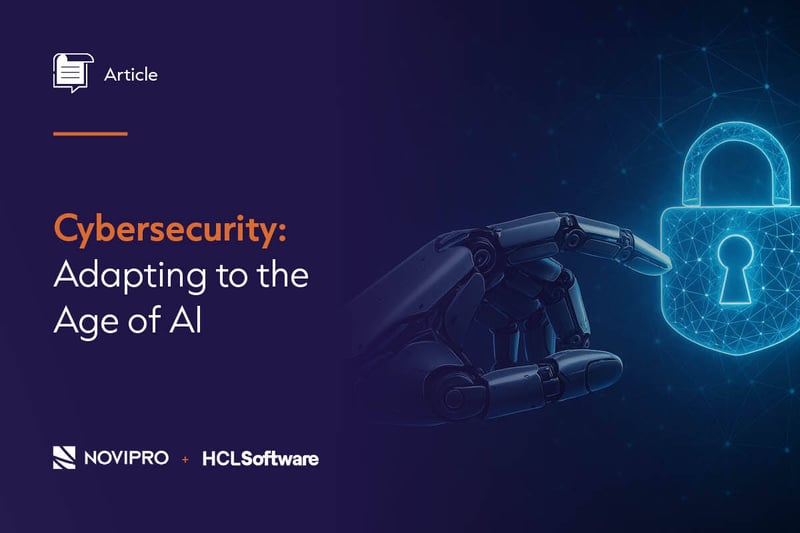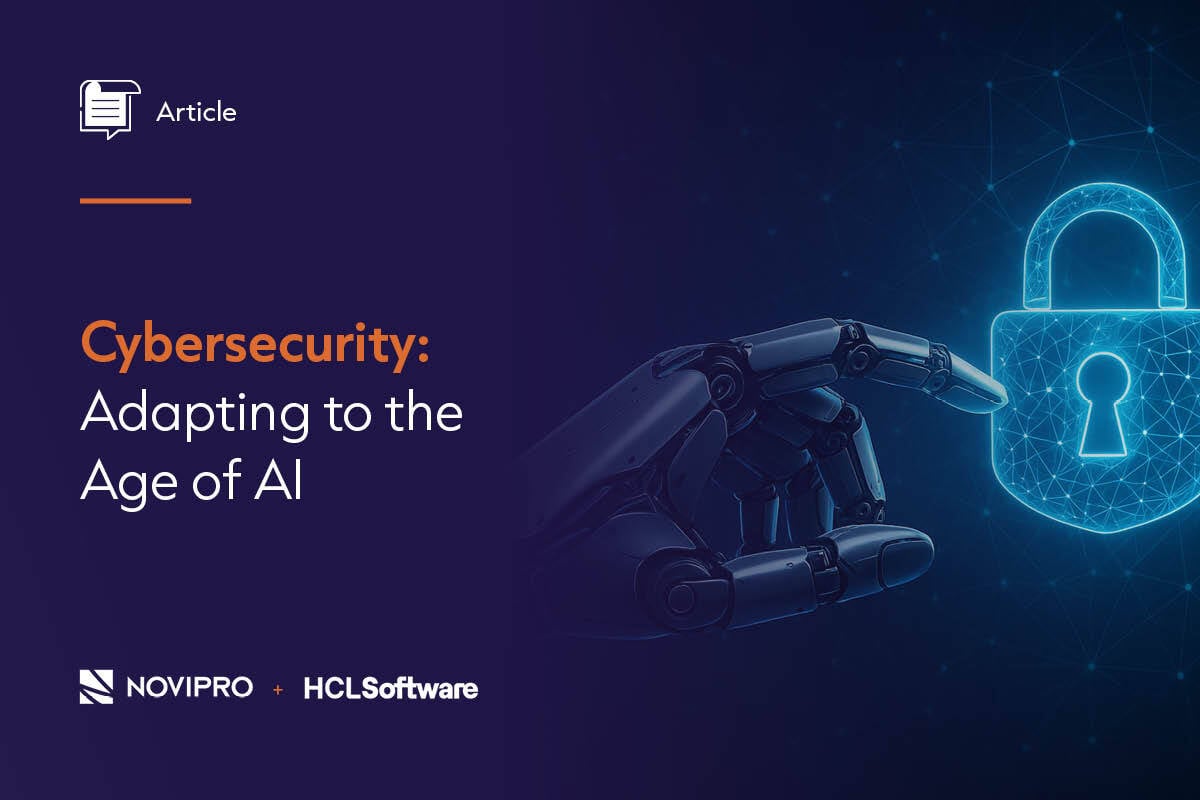The world of cybersecurity is undergoing a radical transformation, and one of the major driving forces behind this change is artificial intelligence. What was once a battlefield of human-driven attacks and defenses is now evolving into a high-stakes chess match among competing AIs used by adversaries and defenders added to the usual cybersecurity mix. To stay ahead, organizations must not only understand the new threat landscape but also the role of AI on the cyber-battlefield. Let’s start first with a review of threat intelligence trends.
The IT Trends Report developed by NOVIPRO Group highlights key statistics from Canadian companies that underscore a new reality: 30% of Canadian companies have been victims of a cyberattack. Reported cyberattacks have increased by 9% since 2024, reaching their highest level since 2019. However, despite this, only 54% of Canadian companies proactively reviewed their data security practices after news reports about data breaches, with 45% simply carrying on as usual. This is a 7% decrease from last year. However, simply ignoring the plethora of news about cyber breaches and carrying on with ‘business as usual’ is fraught with danger.
Analysis of the latest statistics* shows alarming new cybersecurity loss trends that affect institutions globally. The ratio between cybersecurity spending (USD$185Bn in 2024) to losses (USD$9.22Tn) is 52x in 2025 and is projected to increase to a staggering 68x by 2030 (i.e., $262Bn of spending versus $18Tn in losses) if we ‘keep doing the same things Let’s look at AI through this lens and determine what we need to do differently if we are to change this ratio.
* Source: Statista Market Insights, June 2025, National Cyber Security Organizations, FBI - Federal Bureau of Investigation, IMF
The Rise of Adversarial AI
Cybersecurity threats are no longer simple, opportunistic attacks. Adversarial AI uses sophisticated algorithmic and mathematical approaches to research, plan, and execute malicious campaigns with greater efficiency. This new wave of threats takes many forms:
- AI-Powered Phishing: Forget the old advice about looking for grammatical errors in a phishing attempt. Adversarial AI can analyze your social media and online presence to generate highly convincing, grammatically correct, personalized phishing messages using facts about you gathered from the open internet as well as the dark web (Yes, that’s how all your data from the Equifax and AT&T breaches gets used). These messages are expertly crafted, with AI, to reference people you know and facts about your life, making them incredibly difficult to detect and reject.
- AI-Exploitable Vulnerability Assessments: Attackers can now use AI to scan an organization's public-facing resources, performing deep analysis of applications and operating systems to find any exploitable vulnerabilities. This allows them to launch targeted and highly effective attacks based on real AI reconnaissance.
- AI that Adapts “On-the-Fly”: The new generation of malware now has a "brain." Adversarial AI embedded in malware will be able to learn and adapt to its environment and your defenses without ever needing to contact a command and control server, simply by evaluating its computing environment once it makes landfall. It will determine its location, assess available resources, and identify the most promising victims (e.g., Am I at an organization that has business continuity as a critical dependency, do they have money, can I lock up or extort the crown jewels with ransomware?)—all in real-time.
The Problem with Traditional Defenses
In this new reality, simply following security best practices and complying with security compliance standards is no longer enough. The speed and sophistication of AI-driven attacks means that static defenses will be quickly outmaneuvered. Organizations must defend with flexible resiliency to new kinds of attacks, including AI-powered ones, evaluating and then deploying AI-powered defensive technologies and processes to continuously evaluate and evolve the security of their computing estates. Even more important is to involve key stakeholders in collaborative communications and the overall process, and to break down silos.
Fighting Fire with Fire: An AI-Powered Defense Strategy
An effective defense against adversarial AI requires a multi-faceted approach centered on resiliency as well as leveraging AI-driven solutions as appropriate. Here's some good places to start:
- AI-Based Anti-Phishing: Implement AI-powered technologies that can analyze incoming emails, cross-referencing them with threat intelligence and analyzing links for malicious URLs and IP addresses. Organizations can also use AI to model their employees' digital footprints, helping to predict and defend against what adversaries likely know and might leverage.
- AI-Assisted Attack Surface Analysis and Testing: To stay ahead of attackers, you must think like them… and you must be organized to communicate AND defend in a unified, attack-centric way. Use Threat Intelligence driven Attack Surface Analysis and testing to identify exploitable vulnerabilities in your computing ecosystem. Adopt the AI-driven technologies that are coming out in this area, after you evaluate their effectiveness. Ensure that SecOps and ITOps have ways to collaborate, communicate and work together on your exploitable vulnerability exposures. This allows you to prioritize and remediate vulnerabilities based on real-time threat intelligence relevant to your industry and geography. The goal isn't just to be compliant with best practices; it's to measure and actively manage cyber risk outcomes. Lastly, involve business leaders in defining and measuring reduced cyber risk.
- Real-time Visibility and Action: Invest in technologies that provide real-time adversarial analysis across your entire computing estate—from laptops and mobile devices to servers and cloud instances. This is a critical component of a resilient and effective security strategy. You must be able to see what's happening in the threatscape and take immediate action, even on devices with spotty connectivity. For example, if threat intelligence shows that a vulnerability is being actively exploited in an application used by remote workers, you need the ability to quickly patch the application and close the exploitable vulnerability attack surface without disrupting business continuity, even if the remote worker has an intermittent internet connection.
“At NOVIPRO, we see that companies integrating AI into their cybersecurity strategy experience a significant reduction in risk. Our clients particularly value real-time visibility and proactive threat detection.”
— Kévin Rosenbom, Account Director - Solutions Sales Representative at NOVIPRO
The Human Element and Data Privacy
Beyond technology, the proliferation of AI, particularly Generative AI, presents a new set of challenges for data privacy. The "human OS" remains a major vulnerability in the computing environment. People are inadvertently leaking sensitive IP into public AI engines by copying, pasting, and even speaking confidential information into public Generative AI systems. No traditional Digital Loss Prevention (DLP) system can catch this kind of leakage, and it is dubious that the new generation of “GenAI Firewalls” is going to work.
To address this, a common-sense approach is needed:
- "Human OS" Training: We need to move beyond traditional security training and focus on making people truly aware of their actions. The goal is to instill a culture where employees think before they act, understanding the privacy implications of their interactions with AI.
- New Technologies: Businesses need to develop and deploy new technologies that can track and validate actions like "copy-and-paste" and "drag-and-drop" as people use GenAI. This new generation of “GenAI Firewall” security tools must strike a balance between protection and productivity, tracking derivative materials and sharing with minimal friction, as we’re wanting to make people more productive and not put friction and disruption (which are part and parcel of cyber security) too much into the mix.
- A Business Approach to Cyber Risk: It's time to accept that 100% prevention is an unachievable goal. Business leaders must adopt a mindset that treats cyber losses like any other business loss, calculating allowances and preparing for response actions. Cyber losses should be considered a normal part of doing business. This is part of a balanced approach to cybersecurity. Lastly, we need to find ways to measure and then minimize cyber risk. (One effective means is to establish the maximum exploitable vulnerability exposure time for critical systems, which we call “Protection Level Agreements” ... but that’s a topic that deserves its very own blog article!)
Successfully navigating this new cybersecurity landscape requires a strategic partnership that combines cutting-edge AI-powered solutions with a deep understanding of the evolving threat and business environments, combined with common-sense strategies like breaking down silos among teams, tools and processes. NOVIPRO and HCLSoftware can help you to navigate through all this cybersecurity complexity with confidence.![]()
— Robert Leong – Senior Director, Head of Product Management at BigFix








